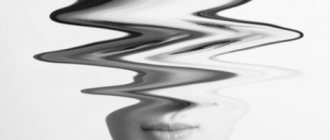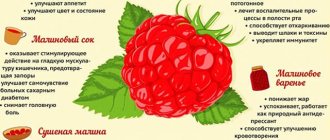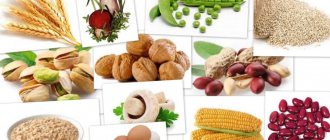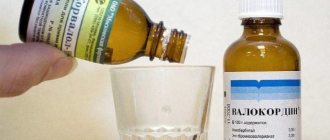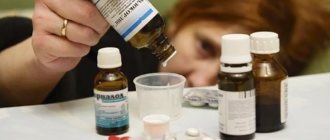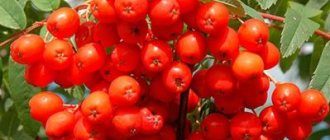This medicinal plant has long been used in pharmaceuticals, cosmetology and cooking. The beneficial properties of mint have been known since ancient times. One of them is its ability to influence blood pressure. This effect is produced indirectly, through the impact on some organs and systems of the body. But, despite all the positive effects, this medicinal herb is not always useful, especially when the cardiovascular system is disrupted. Let's understand the subtleties of the effects of mint on the body and whether mint helps with blood pressure .
The effect of mint on blood pressure
How does this herb affect blood pressure (BP)? The combination of components of this medicinal plant acts on blood pressure in such a way that it decreases. Its main active component reduces the force of blood pressure by dilating blood vessels. It must be said that the effect is quite strong, it affects both vessels in normal condition and those in spasm.
Effects of mint on the heart
Peppermint affects blood pressure not only through the vascular system, but also through its effect on the heart, when the heart rate decreases, pressure drops. It helps reduce excessive heart rate (tachycardia), which in turn affects blood pressure.
In case of tachycardia and arrhythmia, the plant helps to normalize the heart rhythm, which, in turn, affects blood pressure, eliminates its fluctuations, and promotes stabilization. Along the way, this has a positive effect on the blood supply to the brain, and in some cases eliminates headaches.
Effects of mint on the nervous system
Peppermint herb has a calming effect on the nervous system, which, in turn, indirectly affects blood pressure, lowering it to some extent. You should not get carried away with “soothing” products based on this herb for a long time, so as not to harm the cardiovascular system.
REFERENCE! Doctors warn that in case of hypertonic blood pressure, remedies based on this herb will be beneficial, since they can to some extent normalize the state of the nervous and cardiovascular system, but in case of hypotonic blood pressure they can worsen the situation.
Despite the healing effects of mint, it and any drugs containing it should not be used without medical advice. Even the most harmless herb has a number of contraindications, and even more so for those that affect blood pressure and the heart. In addition, it is necessary to take into account the individual effect on a person , the body’s susceptibility to the plant.
Compound
The positive effect of the herb is determined by the chemical components contained in its cells and intercellular spaces. The main active ingredient is essential oils, which contain a lot of menthol.
Its maximum concentration is concentrated during the period of mass growing season, for example, in flowers there will be the most of it - 6%, the lowest concentration in green leaves - up to 3%, and in the stem only 0.3%.
The plant also contains:
- Microelements and vitamins. They are extremely important for many biochemical processes, ensuring the functioning of all body systems, especially the endocrine and immune systems.
- Tanning components. They exhibit antiseptic properties, strengthen veins and arteries, therefore helping to stop or reduce minor bleeding, and also have an anti-inflammatory effect.
- Flavonoids. They help strengthen the vascular walls, increase their elasticity and ability to maintain their shape when pressure increases, which is the prevention of minor blood leaks. The substances also reduce the amount of bad cholesterol and cleanse blood vessels from atherosclerotic plaques.
- Organic acids have a beneficial effect on the gastrointestinal tract, stimulate the production of gastric juices, which speeds up digestion and absorption of food.
Attention! Preparations and recipes based on peppermint improve appetite, and this is important to take into account for overweight people.
Could this be the main way to treat and/or prevent high blood pressure?
Some people, without knowing for sure increases or decreases blood pressure, use it for treatment. Doctors warn that mint should not be used without a doctor’s recommendation, be it medications based on it or traditional medicine. In addition, people with blood pressure pathology should be aware that herbal medicine cannot be the main method of treating blood pressure. It can act as an additional remedy, but also only on the recommendation of a specialist, because it can enhance or weaken the effect of certain medications.
Mint can be harmful if used incorrectly. It is important to remember that this is a medicinal plant that should not be abused. In addition, if taken for a long time and/or in large doses as a remedy, this can lead to dire consequences and even death.
Peppermint essential oil for hypertension
No less effective remedy for high blood pressure are mint essential oils.
They are used for acupressure at the onset of hypertension. The oil is applied to the treatment points and rubbed in with massaging movements for five minutes.
Using mint essential oils, you can perform aromatherapy, which will also have a beneficial effect on blood pressure.
You can also add a few drops of oil while taking a bath. The essential vapors of the substance penetrate inside and normalize vascular tone.
Beneficial properties of mint for blood pressure
Since ancient times, mint has been used as a sedative and blood pressure lowering agent. The plant also helps to cope with insomnia, for which you can not only consume it internally, but also take a bath with mint oil. A decoction or tea from the leaves of this fragrant herb helps to relax after stress.
It is useful for hypertensive patients, but hypotensive patients should use it with caution, since blood pressure can drop to life-threatening levels, and it can also slow down the heart rate. But in small quantities, mint can bring benefits to hypotensive patients that do not concern blood pressure, because this herb also has other healing effects.
Chemical components of mint that affect blood pressure
The main reason for the effect of mint on blood pressure is menthol. It acts on blood vessels, dilating them, thereby reducing blood pressure. This ability of mint has made it possible to include it in some cardiac medications that relieve vascular spasms and normalize the functioning of the cardiovascular system.
It should be borne in mind that if for hypertension to normalize blood pressure, they cannot be combined with taking drugs containing mint. They also cannot be replaced with mint products. It can reduce blood pressure for a short period of time and slightly, and antihypertensive drugs have a prolonged effect, therefore they can ensure stability of blood pressure levels throughout the day.
Flavonoids improve vascular permeability and elasticity, which is beneficial in the long term for normalizing blood pressure. In addition to strengthening capillary and vascular walls, these substances prevent the appearance of cholesterol plaques and blood clots. And this action is also indirectly related to blood pressure, since it also depends on the condition of the blood vessels, and the better it is, the more favorable it is for blood pressure indicators.
Components
The main component of mint is menthol essential oil. Menthol is often used in medicine for coughs, rheumatism, and some types of allergies.
Mint also contains the following components:
- flavonoids;
- organic acids;
- tannins;
- microelements.
Flavonoids, which are P vitamins, are designed to strengthen the walls of blood vessels and capillaries, improve their elasticity and permeability. In addition, flavonoids prevent the formation of cholesterol plaques. These substances are also powerful natural antioxidants. With their deficiency, the fragility of blood vessels increases, which leads to the formation of subcutaneous bruises (hematomas).
Organic acids help improve digestion. With low stomach acidity, they are extremely necessary for the body to cope with food processing.
Tannins have hemostatic and anti-inflammatory properties.
The microelements contained in mint improve metabolic processes in the body and increase immunity.
Can it cause harm?
The dosage of drugs containing mint must be strictly observed, otherwise it is fraught with dangerous consequences. In case of overdose or long-term use of such drugs, the functioning of the heart (bradycardia, arrhythmia) and respiratory center (slowdown, even stopping) is disrupted. The use of such drugs is contraindicated in certain diseases (bronchial asthma, a number of cardiovascular pathologies). Self-medication in such cases is unacceptable. The same applies to using an infusion of decoction or tincture. Rare use in small quantities will not cause harm, but systematic use can be life-threatening.
Those with low blood pressure (hypotension) should take mint with extreme caution. A small amount drunk occasionally will not harm, but you should not use systematically, much less concentrated tinctures or decoctions. After taking mint products, hypotensive patients may experience dizziness, weakness, bradycardia, and blood pressure, which is already low, may decrease even more.
Are there any contraindications?
Despite the medicinal properties of mint, if certain factors are present, you must be careful when consuming the plant. Not all medicinal properties of mint are and are not always useful even with normal blood pressure.
- You should not get carried away with mint-based products due to increased drowsiness and decreased concentration (especially for car enthusiasts).
- It is strictly not recommended for hypotension, bradycardia, arrhythmia, heart failure, ischemic pathology and other heart diseases.
- Use with caution in case of vascular diseases.
- If there is a sleep disorder (excessive sleepiness), it may become even worse.
- Do not forget about allergies and individual hypersensitivity to mint components.
- Women should drink mint with caution while pregnant and breastfeeding (since its effect will be transmitted to the baby through breast milk).
- Mint should not be consumed by young children (under five years of age). Older children can be given weakly concentrated mint tea.
- For diseases of the upper and lower respiratory tract, lung pathologies, and bronchial asthma, mint herb should also not be abused, as it slows down breathing, and in large quantities can even cause it to stop.
REFERENCE! Men who have problems with blood pressure, despite the benefits of mint remedies, should think twice before using it, as they can cause a decrease in potency (if taken for a long time).
Are there any restrictions? What are the side effects?
Mint is beneficial for the cardiovascular system and high blood pressure, but only if used correctly. Excessive amounts of herbal remedies and medications based on mint even for hypertensive patients pose a serious danger. It is worth considering the cumulative effect.
ATTENTION! Consuming mint can lead to such consequences as depression of the heart and disruption of its rhythm, slow breathing, and a decrease in blood pressure below normal.
The following symptoms indicate an overdose: drowsiness, headache, weakness, palpitations or weak pulse, dizziness, darkening of the eyes, nausea, vomiting, decreased muscle tone. In this case, you need to call an ambulance.
Due to increased drowsiness, it is better not to drink mints when performing work that requires concentration and quick response. In the presence of certain gastrointestinal diseases, mint can cause heartburn.
Pharmacological properties
Common mint, which is most often cultivated in garden plots
At the moment, a large number of plant varieties have been cultivated (tender, fragrant, field, garden, ornamental, and so on), however, peppermint is more suitable for use for culinary and medicinal purposes; in second place is marsh mint, which grows en masse in humid ecocenoses and along the banks. These types contain more menthol and other beneficial substances.
Interesting information. Cosmetologists recommend using a fragrant decoction for the skin when taking baths and in hair care. Doctors advise rinsing areas of inflammation when there are diseases of the oral cavity and teeth. In ancient Rome, when teaching young people, mint stems were woven into wreaths that were placed on the head; it was believed that its phytoncides enhanced brain function.
Mint has a wide range of positive effects on the human body:
- calms the central nervous system, significantly improves sleep;
- dilates blood vessels;
- has astringent properties;
- exhibits a mild analgesic effect for menstrual pain in women;
- alleviates toxicosis during pregnancy;
- stimulates digestion and improves appetite;
- relieves spasms during headaches;
- normalizes gastric and intestinal microflora;
- stimulates bile production and has a mild diuretic effect.
The leaves of the plant are often added to tea to give the drink a unique aroma. During a cold, it is recommended to brew this drink more often and make it richer. This helps with diseases of the upper respiratory tract, especially if you use honey instead of sugar.
Mint for high blood pressure
Peppermint may reduce short-term high blood pressure and help with headaches
The plant has a mild hypotensive effect. It is important to understand that for the treatment of hypertension or other problems of the cardiovascular system, as an alternative to medications, peppermint is not suitable, but its biochemical components can have a vasodilating effect, relieve spasm of the veins and arteries in the brain, have a calming effect on the central nervous system, which helps normalization of pulse and blood pressure. Based on the foregoing, it is not difficult to conclude that mint with high blood pressure can be useful for healthy people or people with the initial stages of hypertension.
The main active ingredient that stabilizes blood pressure (reduces peripheral vascular resistance) and brings situational vasospasm back to normal is menthol. Thanks to essential oils, blood vessels dilate and the rhythm of the heart calms down. Therefore, if a person feels a headache after a working day or during a sudden change in weather, he should drink one or two cups of rich mint tea.
The price of this product is minimal, and the result is reliable, but no synthetic substances enter the body and side effects are extremely rare. More details about the beneficial effects of mint on the cardiovascular system can be seen in the video in this article.
Note. Well-known drugs that dilate blood vessels, for example, validol, valocordin and others, contain menthol. Therefore, there is no doubt that mint lowers blood pressure and helps normalize cardiac function.
Contraindications
Menthol is dangerous for people suffering from bronchial asthma
Like any other natural remedy that includes biologically active components, its use has certain limitations.
It is not recommended to use recipes containing mint without a doctor’s recommendation in the following cases:
- children under 3 years old;
- with varicose veins (meaning the consumption of significant doses), because this leads to relaxation of venous tone;
- before and during work that requires increased attention, since mint-based products may cause drowsiness;
- persons with chronic low blood pressure;
- with gastritis with high acidity, with frequent heartburn;
- since mint is an essential oil plant, excessive consumption in men reduces potency and libido, and in women who cannot get pregnant for a long time, the problem may worsen;
- during lactation;
- in case of disorders of the liver and excretory system organs;
- for allergy sufferers, people with bradycardia and bronchial asthma, menthol can provoke an exacerbation, cause bronchospasm, suffocation and even anaphylactic shock;
- in case of individual intolerance to one of the components in mint;
- not recommended for people suffering from constant fatigue syndrome.
What happens if you take mint with low and high blood pressure?
In both folk and official medicine, mint-based remedies are used to treat hypertension and some heart diseases due to their vasodilating, antispasmodic and calming effects.
If you have hypotension, you should limit the use of products based on this herb. Frequent use of teas and other remedies with such a plant can aggravate the situation and cause health problems. To normalize vascular tone, hypotensive patients can drink mint tea no more than once a day.
In the treatment of high blood pressure, fresh leaves of the herb are used, on the basis of which essential oils, pharmacological preparations, tinctures, decoctions, infusions, and herbal teas are made. Mint is used as an independent remedy and in combination with other medicinal plants. To normalize blood pressure, peppermint oil is used in aromatherapy and massage. It is also added to the bath.
an infusion, decoction or mint tea in the amount of one or two glasses (not concentrated) per day to prevent high blood pressure. Before using medicines from the plant, you should consult a specialist.
Pregnant women often have high blood pressure. In order to reduce the use of hypertensive medications, doctors recommend (but not for hypotension and cardiovascular diseases) adding a couple of leaves to tea. That is, pregnant women should not abuse the use of herbal teas with the presence of mint.
It is not recommended to give mint to children under five years of age. A small amount of it is indicated only for high blood pressure, restless sleep, insomnia, hyperactivity in the form of peppermint oil, in the form of a decoction and herbal tea.
Varieties of mint
Not all types of mint have medicinal properties, among which there are more than 10 hybrids and 25 varieties.
The most famous and used by folk healers is peppermint, which was developed by the British by crossing wild species of this plant. It contains a high percentage of essential oils. The serrated leaves of the herbaceous plant are collected before flowering, in dry weather, in the morning.
Peppermint contains menthol, and its lemon balm variety has hints of lemon. Catnip, also known as catnip, is also used for medicinal purposes. The leaves are rich in substances similar in their sedative properties to valerian. Catnip tea in the evening for insomnia. Helps with intestinal atony and constipation.
There are garden and chocolate mint, which are suitable as additives to drinks and confectionery, as they give them a pleasant taste and aroma.
But people with hypertension should use peppermint and products prepared on the basis of this herb.
How to use mint for pressure?
Mint infusion. To prepare it, you will need a dry leaf of the plant (a teaspoon) or fresh (no more than three small leaves per glass of boiling water). It is infused in a glass of boiling water for a quarter of an hour and taken half a glass per day.
Mint tea. Mint is added to regular classic tea. For this purpose, you can also use dry
leaves, and fresh. To make tea you need a little of them, two or three are enough so that they emphasize the taste of the tea and do not drown it out completely.
Mint decoction. To prepare it, add two tablespoons of fresh leaves (or a tablespoon of herbs) to a glass of water and boil over low heat for about ten minutes. The decoction is consumed once or twice a day, no longer than a week (this is the maximum).
Mint tincture. The remedy is made on the basis of alcohol or vodka. You need fifty grams of mint and half a liter of alcohol (half the amount of alcohol). The mixture should be infused for two weeks in a dark place in a tightly sealed glass container. Take fifteen to twenty drops of the finished tincture.
Peppermint tincture can be mixed with other alcohol tinctures. In this case, the proportion should be one to four (one part mint).
- In tandem with motherwort tincture, this herb has a sedative effect, removes nervous excitability and anxiety, normalizes sleep and blood pressure (if it rises due to stress or anxiety).
- Peppermint taken together with peony tincture normalizes blood pressure (during stress, hypertension), reduces anxiety, restlessness and other nervous disorders.
- Together with hawthorn tincture, the action of mint gives a calming effect, helps with insomnia, anxiety, worries, stress, and normalizes blood pressure (with hypertension).
Ten to fifteen drops of any of these remedies are mixed with water and drunk before meals (for stomach problems, it is better to take the remedy after meals) no more than three times a day.
It is forbidden to be treated with tinctures for a long time (the optimal period is a week). Then there is a week break. After which the course of treatment is repeated. It is also necessary to take into account the compatibility of medications taken and mint-based products.
Peppermint essential oil
The essential oil of this fragrant herb is used in aromatherapy as a tonic and soothing. It can be added to cosmetic oil (a few drops) for a massage that affects blood pressure. Doctors also advise adding a few drops of peppermint oil to the water while taking a bath. Peppermint aromatherapy affects the breathing, nervous and cardiovascular systems.
With chamomile
To prepare a healing drink, you need to take two tablespoons of chamomile and one tablespoon of mint (herbal dosages are calculated for one glass of water). The resulting decoction is taken two to three times a day for a week. The course of treatment can be repeated after a week.
With viburnum
Brew one tablespoon of mint and two or three tablespoons of viburnum, cook for about fifteen minutes. It is recommended to take the decoction twice a day for a week. The course of treatment can be repeated after ten days.
With sea buckthorn
Mix two or three tablespoons of sea buckthorn fruit with one tablespoon of mint, pour boiling water over it and cook for about five minutes. The resulting vitamin drink can be taken half a glass two to four times a day.
With hawthorn
For the mixture, take two to three tablespoons of hawthorn fruit and one tablespoon of mint (per glass of water). The decoction is taken one third of a glass three times a day. Treatment should not last longer than a week.
In conclusion, it should be said that, despite a number of useful healing properties of mint (painkillers, anti-inflammatory, sedative, hypotensive), its use has a number of limitations. So, before you start getting healthier with its help, you need to consult a specialist about all the pros and cons, taking into account individual characteristics and the presence of certain diseases.
Traditional recipes for mint
Traditional medicine offers many recipes based on mint. Use both dried and fresh leaves of the plant to prepare the drug.
Mint tea
It is better to brew an aromatic drink from fresh mint leaves. Take 3-4 leaves per 250 milliliters of boiling water. If the herb is dried, this is a teaspoon of crushed raw materials. Infuse the tea for 10 minutes and use with sugar and honey. People with hypertension can drink up to 2-3 cups of tea per day.
Before going to bed, drink 0.5 glasses of mint tea to calm down and fall asleep quickly.
Mint decoction
Preparing the decoction is not difficult: 2 tablespoons of raw materials are placed in 1 liter of boiling water and kept on low heat for no more than 8-10 minutes. Drink chilled and take a third of a glass.
You can prepare a tablespoon of raspberries with mint. They will give the drink additional aroma and beneficial properties.
Combine the plant with lemon balm. A teaspoon of herb is enough for 2 glasses of cold water. Boil the broth for 15 minutes, then cool and strain.
Such remedies are good for relieving vascular spasms and relaxing. It can be added to decoctions and herbs, such as thyme herb, valerian root, hawthorn flower. In addition to their hypotensive effect, these plants strengthen the heart muscle.
Infusion
For people with hypertension, an infusion of peppermint leaves relieves unpleasant symptoms: headaches, nausea. Take a tablespoon of plant material for 1 cup of boiling water. Leave for half an hour. It is better to prepare the infusion in a thermos. After straining and cooling, take the medicine 0.5 cups.
The effect of infusion of rowan and hawthorn enhances the effect. All components of the drug are taken in equal quantities, but infused for an hour. The drug should be taken before meals, up to 100 milligrams.
Patients with arterial hypertension benefit from an infusion of herbs, which includes: mint leaves, hawthorn flowers, knotweed and adonis herbs. Mix a tablespoon of the prepared raw material, take 30 grams and pour 0.5 liters of boiling water. After 30 minutes of infusion, strain, cool and drink 100 ml.
To relieve nervous excitement and lower blood pressure, prepare a bath with the addition of herbs: peppermint and oregano, taken in an amount of 100 grams, hawthorn flowers, mistletoe leaves - 50 grams. The herbs are poured with 5 liters of boiling water. After 2 hours of straining, pour the solution into the bath. Water cleaning takes 15-20 minutes. If you bathe daily for 2 weeks, your blood vessels will return to normal, tension will be relieved, and your blood pressure will drop.
Peppermint is part of many herbs that have a calming and antihypertensive effect.
Essential oil
Effective use of peppermint essential oil for high blood pressure. Apply the liquid to the aroma lamps. During the massage, rub the drug into the skin, which allows the patient to calm down. After the procedures, a person with hypertension feels comfortable. Normalizes the blood circulation process, calms the heart rate.
Before going to bed, add a few drops of essential oil to a hot bath. The effect of mint aroma is only positive. However, this herb should not be consumed by people with low blood pressure.


